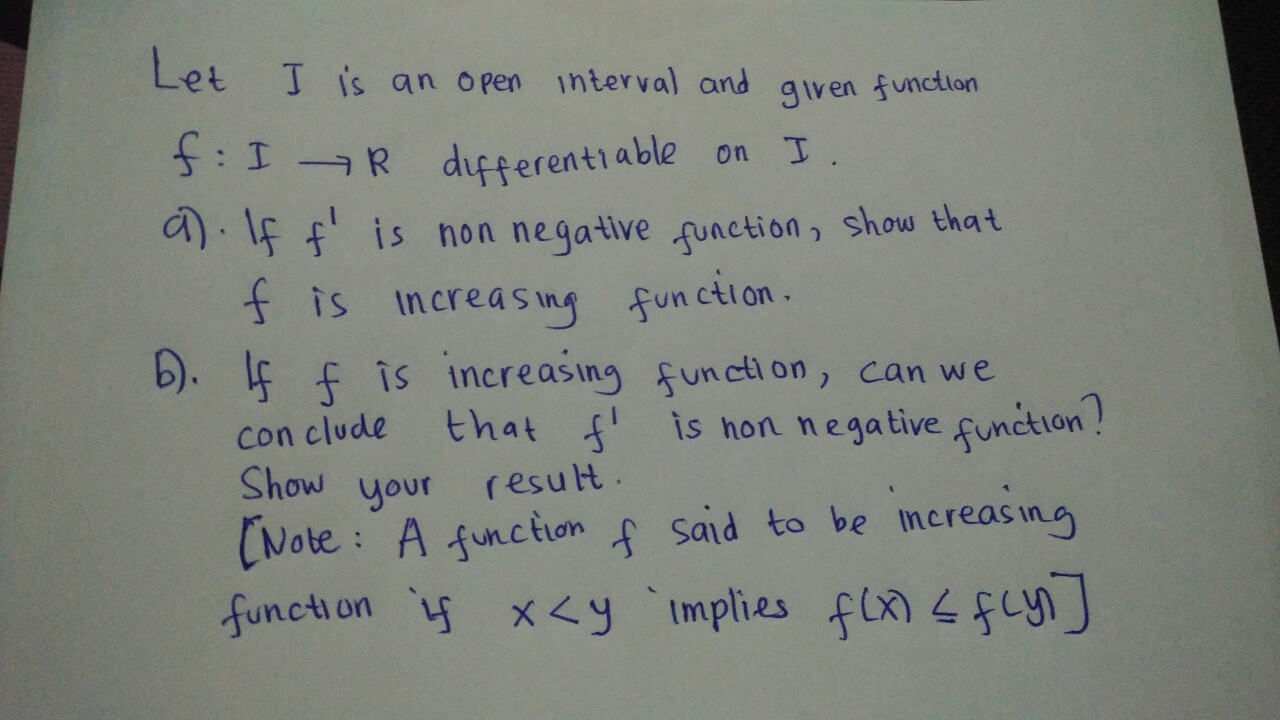Let #f(x)# be defined and differentiable in the interval #I sub RR# and suppose #f'(x) >= 0# for every #x in I#.
Choose now two points #x_1,x_2 in I# with #x_1 < x_2#.
Based on Lagrange's theorem there must be a point #xi in (x_1,x_2)# such that:
#f'(xi )= (f(x_2)-f(x_1))/(x_2-x_1)#
But as #xi in I# then #f'(xi) >=0#, so:
# (f(x_2)-f(x_1))/(x_2-x_1) >=0#
and because #x_1 < x_2# so #x_2-x_1 >= 0#, then:
#f(x_2)-f(x_1) >= 0#
or:
#f(x_2) >= f(x_1)#
So we proved that if #f'(x) >=0# then:
#x_1 < x_2 => f(x_1) <= f(x_2)#
that is the function is increasing.
Now we prove the opposite implication: suppose the function is increasing so that:
#x_1 < x_2 => f(x_1) <= f(x_2)#
Taking any point #x in I#, as #f(x)# is differentiable, then the limit:
#lim_(h->0) (f(x+h)-f(x))/h = f'(x)#
exists.
Now for any #h >0# we have:
#x+ h > x#
which implies:
#f(x+h) >= f(x)#
and:
#(f(x+h)-f(x))/h >=0#
Then if we take the limit from the right, for the persistence of the sign we must have:
#lim_(h->0^+) (f(x+h)-f(x))/h >=0#
But when the limit exists, the limit from the right is equal to the limit, so:
#lim_(h->0) (f(x+h)-f(x))/h >=0#
which means:
#f'(x) >=0#


